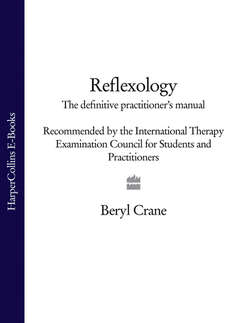Читать книгу Reflexology: The Definitive Practitioner's Manual: Recommended by the International Therapy Examination Council for Students and Practitoners - Beryl Crane - Страница 60
The case history
ОглавлениеThe information gained from observation, questioning and specific diagnostic techniques (such as palpation) should be exactly recorded for future reference. This is usually done by keeping a case history. A case history consists of many things that might be related to the patient’s disorder. It allows for a methodical evaluation.
It should record the following at the first consultation or treatment session:
• Date of commencement
• Date of birth
• Name and address
• Telephone number
• Sex
• Occupation
• Name of medical practitioner
• Brief medical history
• What medication the person is taking
• What the complaint is and any other health problems
• Dates of all treatments, with a brief evaluation.
The medical history usually consists of information about past severe complaints or medical problems that the person has experienced. Some of these may relate to the present disorder. It is also imperative that the family medical history is explored in case there is some connection. A general social history (e.g. occupation) to give some background information is also advisable.
It is not necessary to have a tick list of topics to note, but attention can be given to the following:
• Skin quality (feet, hands and ears)
• Nail quality (feet and hands)
• Hair quality
• Weight – obese or underweight
• Posture
• Exercise, also hobbies and relaxation
• Joints – restricted movement or hereditary defect
• Gait analysis
• Muscle tone
• Sleep patterns
• Behaviour patterns and mannerisms
• Diet – nutritive or convenience foods
• Alcohol – regular or occasional drinker
• Tea/coffee intake – if in excess of six cups per day
• Water intake
• Smoker
• General circulation
• Blood pressure
• Allergies
• Hormone imbalance
• Emotional state and stress level
A record should be kept of any tender reflexes so that symptoms and tender areas can be reviewed throughout the treatment sessions.
Finally, a record must also be kept of the patient’s attendance and the amount charged. If you ask your client to refer anything to their doctor, make a note of the date and time you advised them and their response.
The above points are given purely as a guide. They indicate the type of information needed for a case history sheet or index card. It cannot be emphasized enough that the keeping of adequate records is a way of professional life. It also covers practitioners in the event of any claims of any incorrect treatment. One should therefore adopt best and safe practices at all times.
